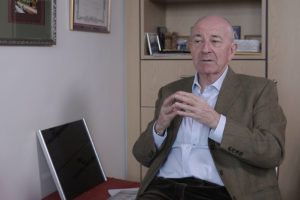The Role of Measurement Tools in Science
Physicist Ronald Walsworth on quantum mechanical transitions inside atoms, blue and red shift for GPS, and use...
Why do we have to use parallel computation? What are the advantages of tiled multi-core processors? Which types of problems can be efficiently solved using parallelization? Professor of Electrical Engineering and Computer Science at MIT Anant Agarwal talks about architecture of multiple processors.
Over the years in the 80s and 90s the processors got faster and faster, a work got done faster and faster. However there came a time in the late 90s when this processor could not get to be fast enough. It’s like taking a human being and making that human being stronger and stronger, giving the human being more and more vitamins, more and more muscles and so they could do more and more work. But then came a time when you could not make that human being stronger that they already were. We will be reaching physical limits. We will be reaching physical limits of energy, physical limits of power how much heat can be dissipated, we will be reaching limits of performance.
The tiled multicore processor took the research for MIT and advanced it to the point we could build a very effective commercial processor that to scale from one core or two cores all the way up to hundreds of cores enabling our field of computing to progress for another ten or twenty years before we would have to think about the next big breakthrough.
DARPA’s an agency that fund a lot of work and the motivation there is defense applications like a mobile radio, applications like satellites, applications like tracking and security and network security and so on where they’re looking to process a lot of signals, a lot of data – the huge demand for processing power with high energy efficiency.

Physicist Ronald Walsworth on quantum mechanical transitions inside atoms, blue and red shift for GPS, and use...

Computer scientist Erol Gelenbe on the idea of AI self-regulation, the goal function of a network and whether ...

Physicist Martin McCall on Maxwell's equations, hiding objects with light, and invisibility cloaks